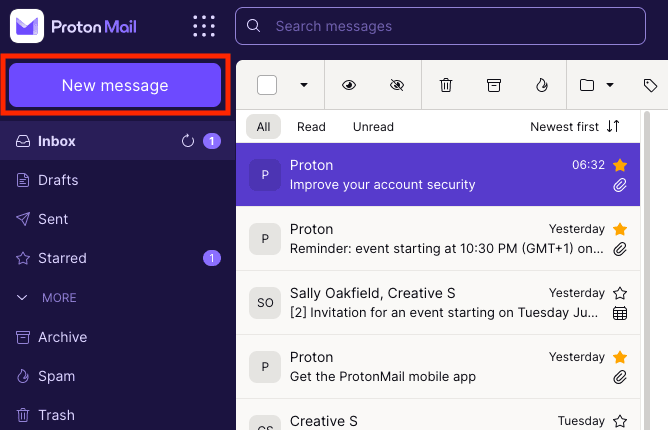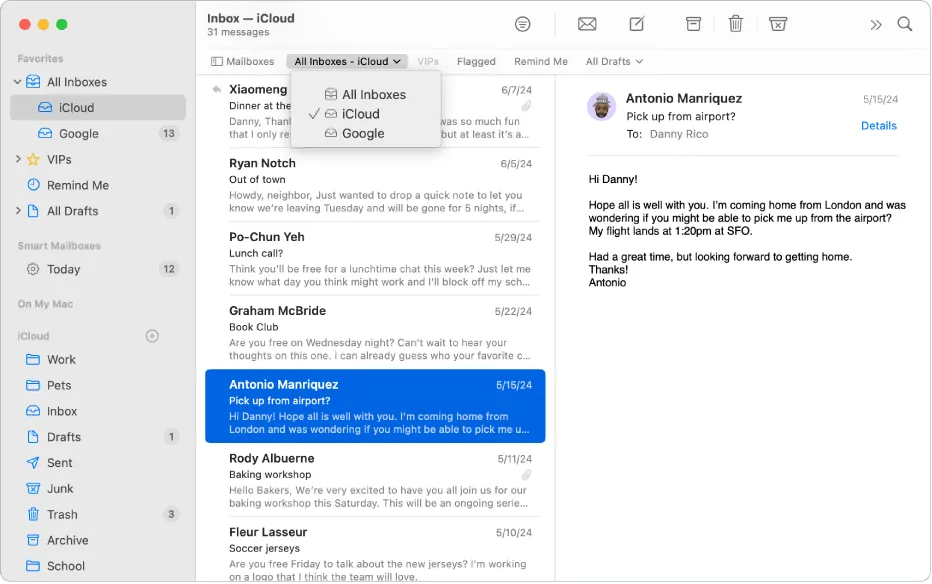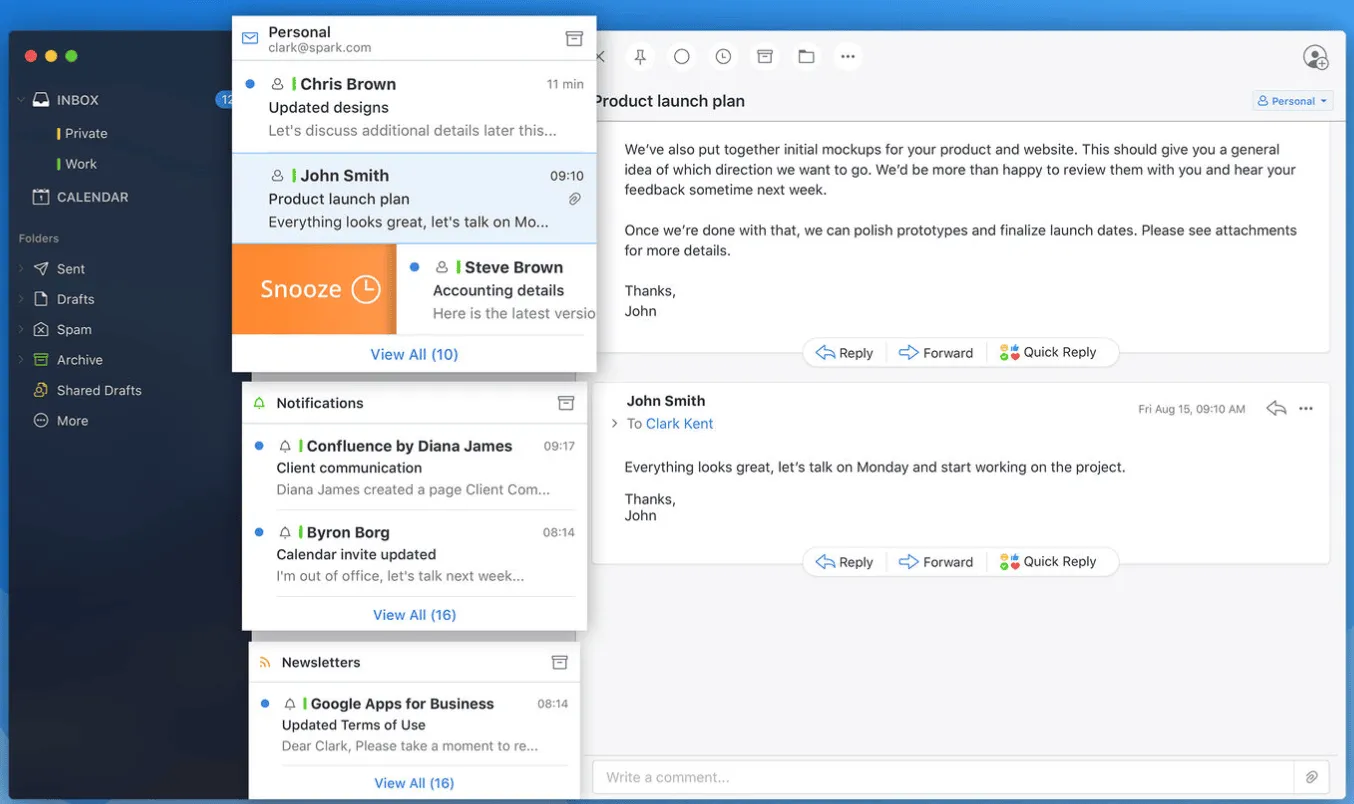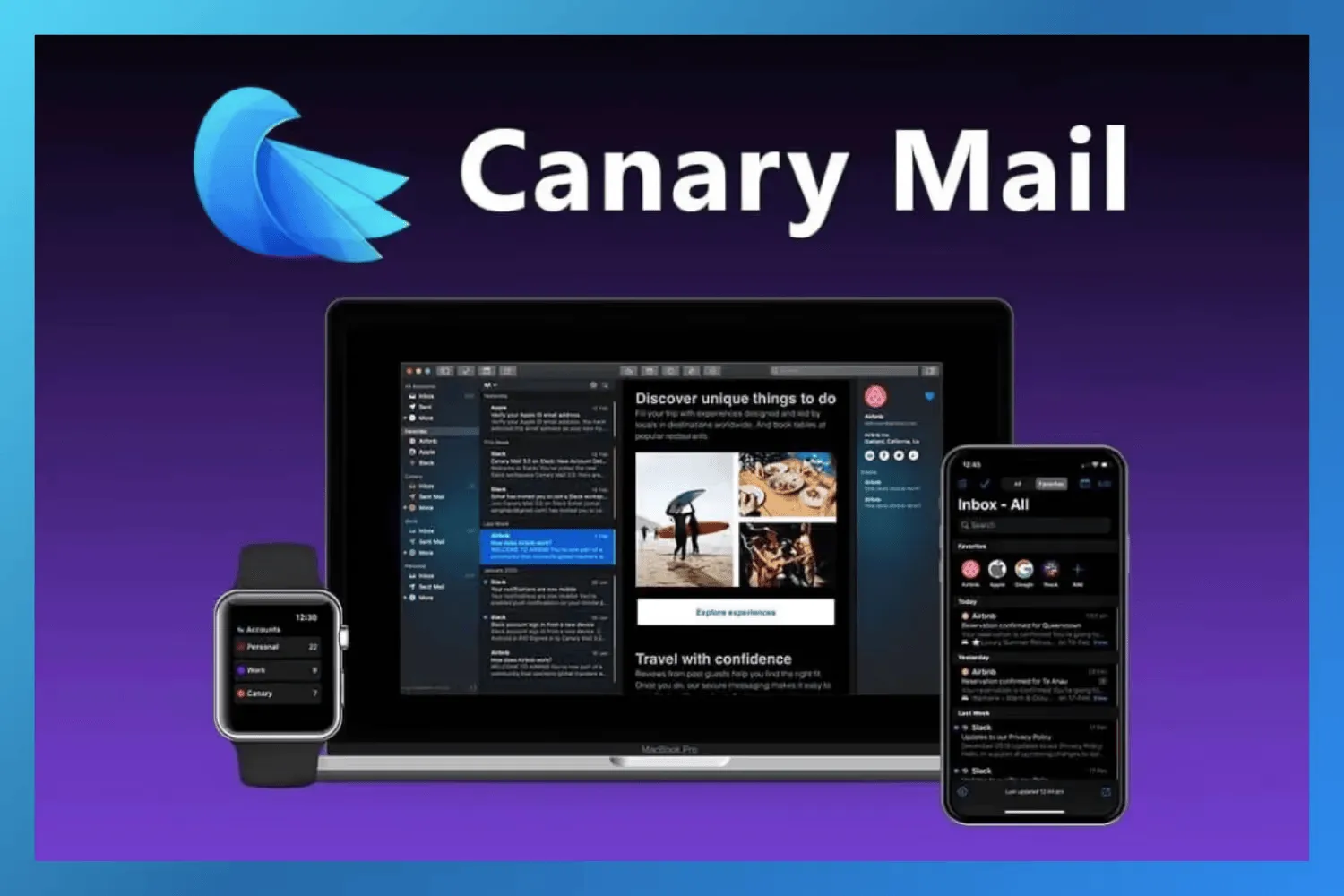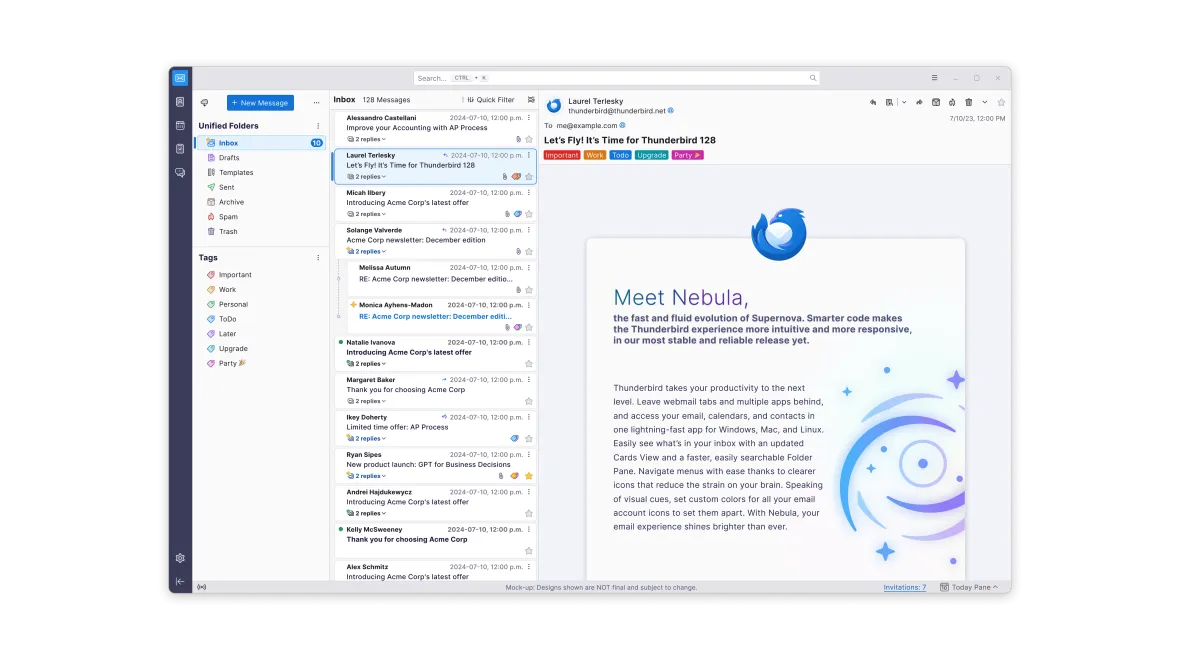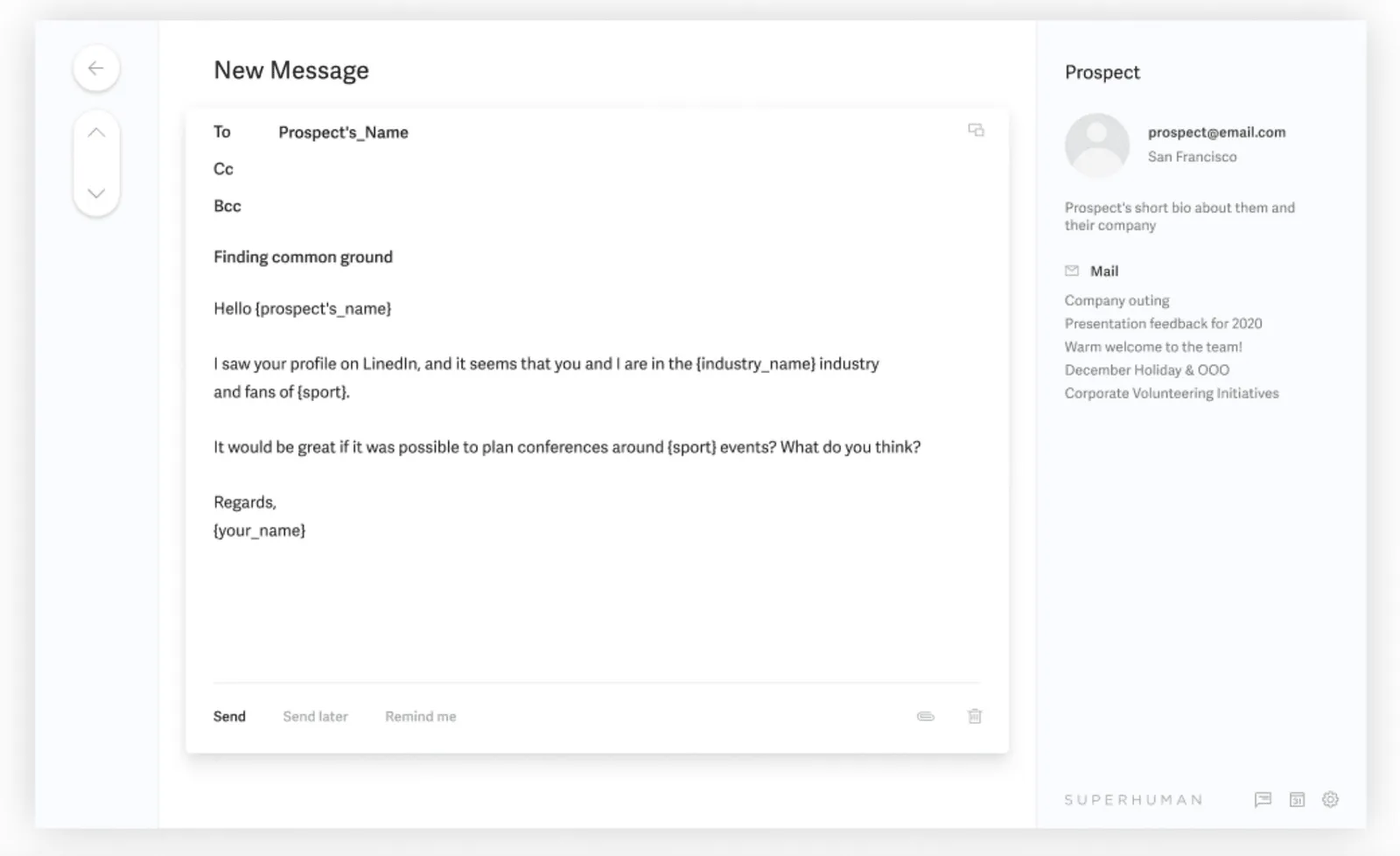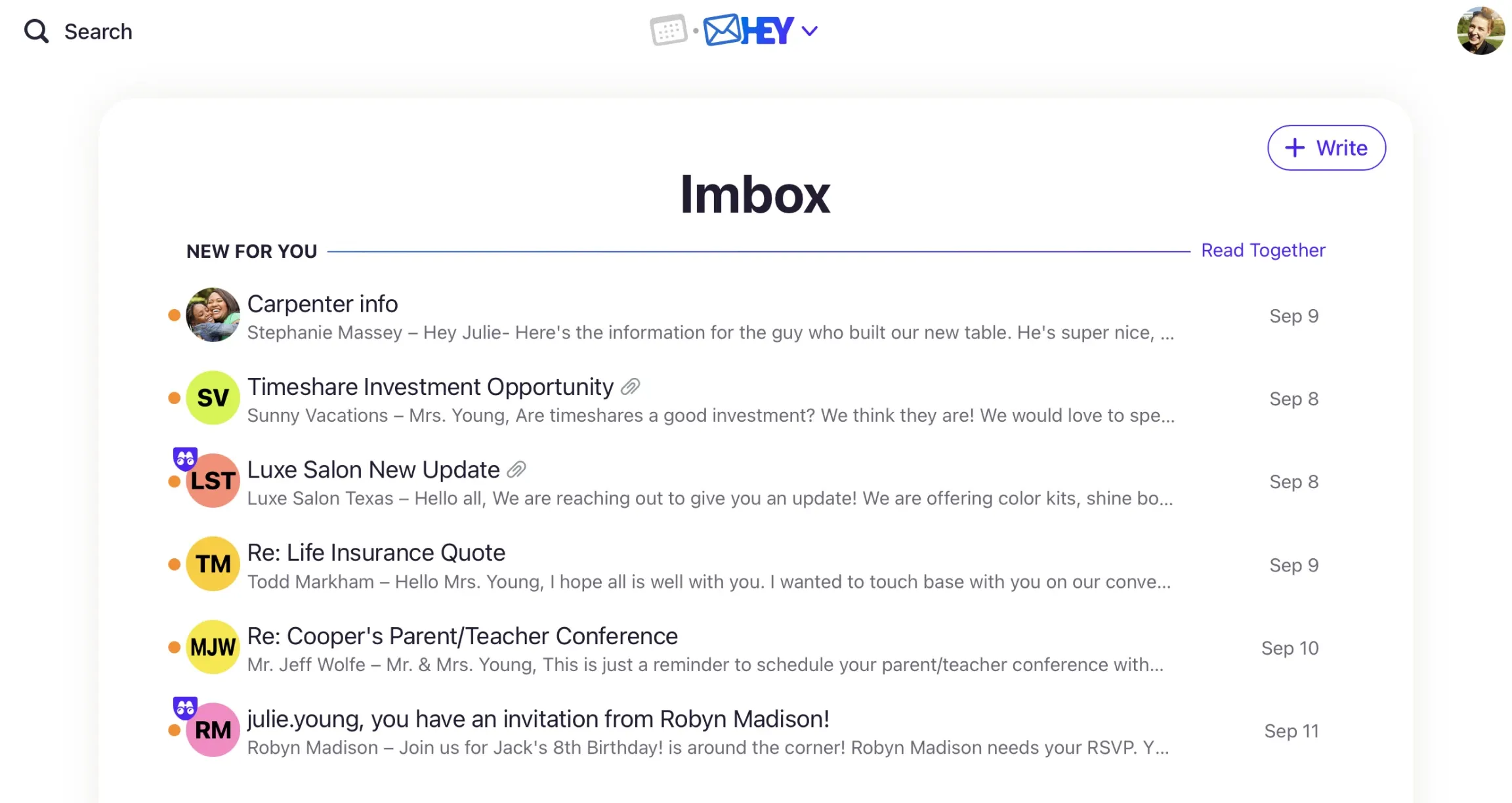Email client rankings 2025: Which app wins for AI and productivity

Email clients have become battlegrounds for artificial intelligence integration, cross-platform consistency, and workflow optimization. This analysis examines ten applications through six months of daily use across Windows, macOS, iOS, and Android platforms.
We reviewed and evaluated ten email clients, focusing on AI quality, cross-platform reliability, and real productivity improvements over marketing hype.
1. Spike: Best overall AI-powered email experience

Platforms: All major platforms plus web
Monthly cost: $0-10 depending on features needed
Spike eliminates traditional email formatting in favor of chat-style conversations. This approach initially feels jarring for longtime email users but proves superior for managing complex multi-party discussions.
The AI feature provides intelligent email summaries that condense lengthy threads into key points, saving significant time when catching up on conversations. The AI Feed surfaces the most important emails and updates from your inbox, learning your priorities to reduce information overload.
Cross-platform synchronization works flawlessly. Messages marked as read on desktop appear immediately on mobile devices, and the unified inbox handles multiple accounts without confusion or delay.
The conversational interface removes visual clutter that hurts traditional email clients. Subject lines disappear, signatures vanish, and email chains become readable discussions. This design choice speeds up processing for anyone managing high email volumes.
Team features include shared inboxes with intelligent message routing, integrated video calling, and collaborative document editing. These additions transform Spike from email client to comprehensive communication platform.
Limitations:
Learning curve exists for users accustomed to traditional email layouts. Third-party integrations remain limited compared to Microsoft’s ecosystem approach.
2. Gmail: Reliable choice with strong ecosystem integration
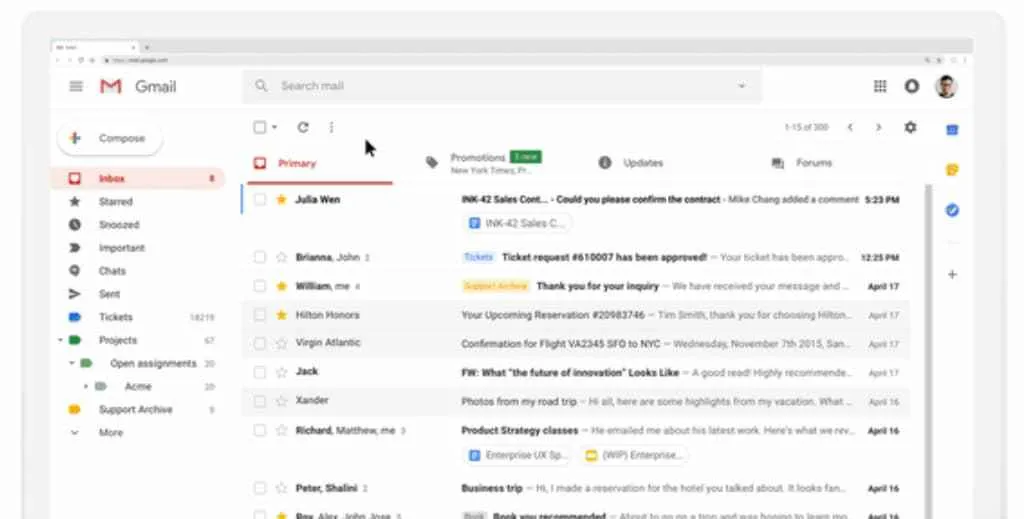
Platforms: Web, mobile apps, limited desktop functionality
Monthly cost: Free with 15GB shared storage
Gmail’s 2025 iteration includes Gemini integration for email composition and smart reply enhancement. The AI suggestions show marked improvement over previous versions.
The search functionality remains unmatched. Finding specific emails across years of correspondence takes seconds, even with complex query parameters. This capability alone justifies Gmail for users with extensive email archives.
Smart Compose now generates entire paragraphs rather than single phrases. The feature works effectively for routine business communications but struggles with nuanced or creative content.
Critical weakness:
Google’s data collection creates privacy concerns for sensitive communications. The advertising integration, while less obvious than before, still influences email organization and suggestions.
Storage limitations become problematic for users with large attachment requirements. The 15GB shared across Gmail, Drive, and Photos fills quickly with modern file sizes.
3. Microsoft Outlook: Comprehensive business solution

Platforms: Native apps across all platforms
Monthly cost: $6-22 per user for business features
Outlook’s Copilot integration represents Microsoft’s most successful AI implementation to date. The system analyzes meeting transcripts, email patterns, and calendar data to suggest relevant actions and responses.
Calendar integration surpasses all competitors. Meeting scheduling, availability checking, and automated follow-up generation work seamlessly across the Microsoft ecosystem. For organizations using Teams and Office 365, Outlook becomes indispensable.
The Focused Inbox feature effectively separates important messages from promotional content. Machine learning accuracy improves over time, though initial setup requires manual training.
Notable strength:
Enterprise security features include advanced threat protection, data loss prevention, and compliance tools that smaller competitors cannot match.
Significant drawback:
The interface feels loaded with features most users never touch. Navigation gets more complex with each update, making simple tasks harder.
4. Proton Mail: Privacy-focused solution with modern features
Platforms: Web and mobile apps, desktop clients available
Monthly cost: $4-15 depending on storage and features
Proton Mail’s end-to-end encryption implementation allows zero-knowledge architecture while maintaining usability. Unlike earlier encrypted email solutions, Proton Mail works intuitively for non-technical users.
The AI features process data locally when possible, avoiding cloud-based analysis that hurts privacy. While this approach limits functionality compared to cloud-powered competitors, it provides real security for sensitive communications.
Bridge software enables integration with desktop email clients while maintaining encryption. This solution appeals to users wanting privacy benefits without abandoning familiar interfaces.
Trade-off consideration:
Search functionality suffers because of encryption requirements. Finding specific messages takes more effort than with standard email clients.
5. Apple Mail: Seamless integration for Apple users
Platforms: macOS and iOS exclusively
Monthly cost: Free with Apple device ownership
Apple Mail excels within the Apple ecosystem but offers nothing for users on other platforms. The AI features prioritize privacy through on-device processing, resulting in less sophisticated but more secure automation.
Siri integration enables voice commands for email management, though accuracy varies significantly based on accent and speaking patterns. The handoff feature between iPhone and Mac works reliably for email composition.
Fundamental limitation:
Platform exclusivity eliminates Apple Mail for anyone using Windows, Android, or Linux systems.
6. Spark Mail: Smart email with AI assistance
Platforms: Windows, macOS, iOS, Android
Monthly cost: Free version, and up to $6.99 for paid plans
Spark Mail positions itself as an intelligent email client that makes inbox management easier through AI-powered sorting and smart features. The app automatically categorizes emails into Personal, Notifications, and Newsletters, reducing the time spent organizing your inbox.
The Smart Inbox feature uses machine learning to prioritize important emails while filtering less urgent messages into separate categories. This approach works effectively for users who receive high volumes of mixed email types.
AI-powered features include email summaries for long threads, smart reply suggestions, and automated email screening. The premium version adds advanced AI capabilities like sender blocking and enhanced email composition assistance.
Notable strength:
The app integrates well with popular productivity tools and offers customizable swipe actions that speed up email processing.
Limitation:
Some users report occasional sync delays with certain email providers, and the free version includes limited AI features.
7. Canary Mail: Security-focused email solution
Platforms: Windows, macOS, iOS, Android
Monthly cost: Free plan available, up to $10 for pro plans
Canary Mail markets advanced security features but implements them inconsistently. The encryption options confuse average users while failing to satisfy security professionals’ requirements.
AI-powered threat detection flags obvious phishing attempts but misses sophisticated attacks. The false positive rate creates alert fatigue that reduces actual security awareness.
Assessment:
Marketing promises exceed delivered functionality. Better security options exist at similar price points.
8. Thunderbird: Open source email alternative
Platforms: Windows, macOS, Linux
Monthly cost: Free with donation requests
Thunderbird represents the challenges facing open-source email development. While extensively customizable through add-ons, the base application feels dated compared to commercial alternatives.
Privacy advantages exist through transparent code and local data storage. Advanced users can modify functionality extensively, though this requires technical expertise most users lack.
Reality check:
Development pace cannot match commercial competitors. New features arrive years after implementation elsewhere.
9. Superhuman: Premium email for power users
Platforms: macOS, iOS, web
Monthly cost: $25 – $33 depending on need
Superhuman targets users processing hundreds of emails daily. The keyboard-centric interface enables rapid message processing once learned.
AI features focus on email triage rather than composition assistance. The system learns your response patterns and suggests appropriate actions for incoming messages.
Cost-benefit analysis:
The premium price makes sense only for users whose time savings justify the expense. Most users gain insufficient benefit to warrant the cost.
10. HEY: Thoughtful approach to email management
Platforms: All major platforms
Monthly cost: $12
HEY implements specific opinions about email management through forced workflows. The screening process for new senders reduces spam but requires active management.
The bundling feature groups related emails automatically, though the algorithms sometimes create confusing associations.
Philosophical question:
Whether HEY’s approach improves email management depends entirely on alignment with its designers’ assumptions about optimal workflow.
Selection framework for 2025
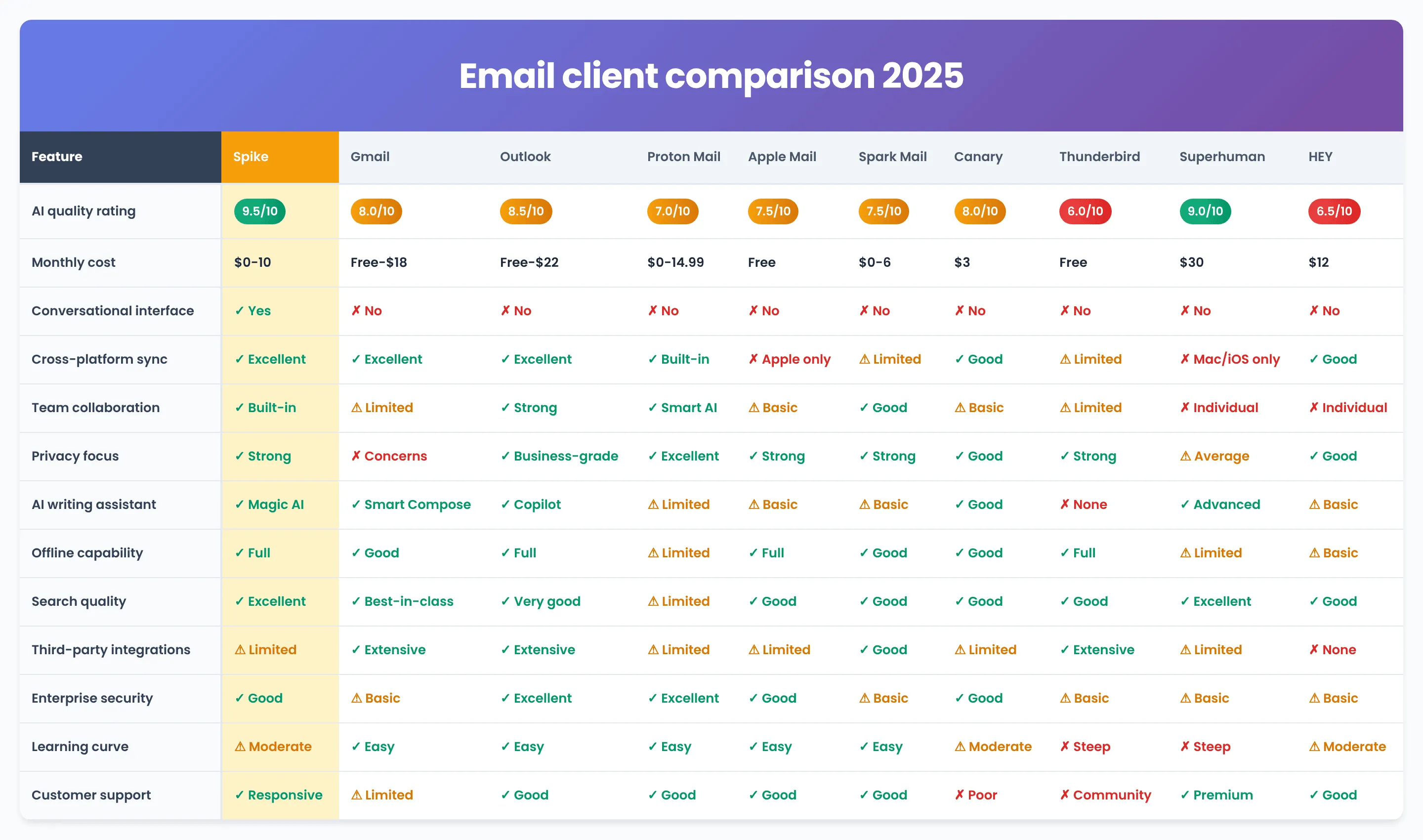
- Choose Spike if: You prioritize AI sophistication, conversational interfaces, and team collaboration features while maintaining cross-platform compatibility.
- Choose Gmail if: You need powerful search capabilities, extensive storage, and integration with Google’s ecosystem while accepting privacy trade-offs.
- Choose Outlook if: Your organization uses Microsoft products extensively and requires enterprise-grade security features.
- Choose Proton Mail if: Privacy concerns outweigh convenience considerations and you handle sensitive communications regularly.
The artificial intelligence integration reality
Current AI implementations in email clients range from useful to marketing tricks. Spike and Outlook show meaningful AI integration that improves daily workflows. Gmail’s AI features work well but lack sophistication. Most other applications add AI features to existing frameworks without thoughtful integration.
The privacy implications of cloud-based AI processing deserve consideration. Applications processing email content on remote servers create potential security vulnerabilities and data ownership questions.
Platform compatibility assessment
True cross-platform compatibility needs native applications rather than web wrappers. Spike, Outlook, and Gmail provide consistent experiences across devices. Platform-specific applications like Apple Mail offer superior integration within their ecosystems but eliminate flexibility.
Web-based interfaces work adequately for occasional use but lack the responsiveness and offline capabilities of native applications.
Conclusion
Email client selection in 2025 requires balancing AI capabilities, privacy considerations, and platform requirements. Spike leads in innovation and user experience. Gmail provides reliability and integration. Outlook serves enterprise needs effectively. Proton Mail addresses privacy concerns without excessive usability sacrifice.
The remaining applications serve niche requirements or fail to justify their existence against superior alternatives. Choose based on your specific priorities rather than marketing claims or feature lists.





